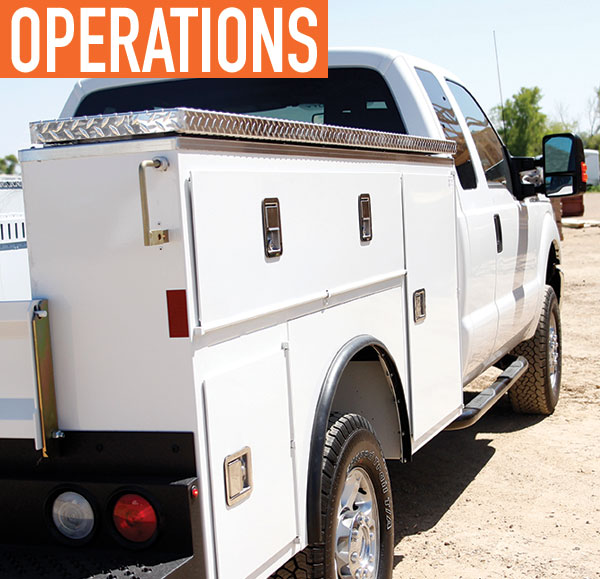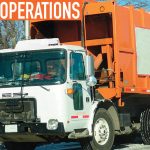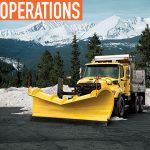With so many vocational work applications resulting in such a wide range of body and equipment variations, the process of creating a work truck is very complicated. Work trucks are basically custom-ordered, rather than mass-produced, and the multi-stage process involves distinct yet interrelated industry segments to finalize the vehicle.
STARTING THE PROCESS
First in the process are the truck chassis and van manufacturers, otherwise known as Original Equipment Manufacturers (OEMs), such as Ford, GM, Nissan, etc. OEMs build an incomplete vehicle, which is reflected in the VIN assigned. The other half of the vehicle, the functional half—which is the body or van equipment—is made by a separate manufacturer. But, how does the final vehicle end up being upfitted?
To start off, the OEMs provide body and upfit manufacturers with specific “fitment” criteria so that the final complete vehicle meets both safety and function requirements. To make sure that their criteria is being followed, the OEMs certify upfit manufacturers. For example, being certified by Ford makes a manufacturer a Qualified Vehicle Modifier, whereas GM’s program creates Specialty Vehicle Manufacturers. These programs put technology and processes in place to consistently produce to the fitment criteria, and then the OEMs maintain that quality control of their certification programs and renewals.
WHERE IT GOES FROM HERE
When it rolls off the assembly line, an unfinished vehicle is sent to one of a number of locations. Such locations include an automotive dealer who ordered the vehicle to keep on hand where it waits for a buyer to come in and order a specific work truck upfit solution; to a body or equipment manufacturer to hold onto until they are ready to upfit it for a dealer or a dealer’s customer (held in what is often called a pool); or to the third player in the supply chain not yet mentioned, the truck body and equipment distributors.
Distributors work with body and equipment manufacturers to help them cover a larger market area, as well as often being experts on the type of upfits that are needed for specific geographic and vocational needs. They also provide those areas of expertise for their local dealers. Distributors can work with a dealer’s in-stock, unfinished chassis or van, they can work with a body or equipment manufacturer’s unfinished chassis or van, and some of the larger distributors are also eligible to carry unfinished chassis and vans directly from an OEM in their own pool. When a distributor is involved, they are typically the final upfitter for the end-user. They often add in other accessories from manufacturers of such products as power technology, lifts, ladders, racks, lights, and more.
So, a final, completed work truck can happen in many ways. This is why a finished vehicle can take months to be delivered.
PRODUCTION EVOLUTION
Chassis and van technology trends are often being featured; articles often focus on fleet tracking, fuel efficiencies, and improved maintenance. This article, and a few that will dig even deeper as follow ups, will provide an overview of the supply chain in the work truck industry. These details may help buyers understand how to best plan for—and take advantage of—new technologies coming down the line on the work truck side.
Body and equipment manufacturers continue to evolve their production techniques with new technologies to make products more efficient and cost effective. Their product development focus is most often on similar goals of increased fuel efficiencies from reduced weight, lower maintenance, longer life, and other key “in-the-field” functional benefits. The time is right, however, for them to be focused on how to move through the process more efficiently, using cloud technology to track and locate vehicles through the entire process.

MORE EFFICIENT BUILDS
The National Truck Equipment Association (NTEA) holds its annual Executive Leadership conference in October, to provide their members insights into the economic, regulatory, and business trends affecting the work truck industry companies who build the work trucks. One of the trends that it focused on in 2016 was the need for the work truck industry to find ways to move into the new technology era.
Today, the membership of the NTEA consists of more than 550 body and equipment manufacturers and more than 750 distributors who serve the needs of large fleets and smaller businesses across a broad spectrum of commercial vehicle applications and needs. The industry produces more than 2.2 million vehicles a year, and generates in excess of $130 billion in revenues. What is especially important is that the industries depending on the work truck industry are the backbones of the US economy.
The NTEA presenters encouraged their members to take a look at how Amazon has been shortening the supply chain, leading to structural changes in how we shop and live. They recommended tightening the inventory cycle and looking for any way to remove the drag on moving inventory to the end users—truck buyers like you.
Understanding fundamental demand is the first step. Because of the fragmentation of the participants in the work truck supply chain and the current lack of any technology integration between them, all of the stakeholders in this industry have a very limited view into the needs of the final customer. Today, there is no consolidated knowledge of the final configurations and how they are being used to shine a light on fundamental demand and guide decision-making.
Visibility is the goal. In the next article, we will introduce some of the ways that different stakeholders are working to solve these problems with today’s technologies.
ABOUT THE AUTHOR:
Kathryn Schifferle, is the founder and CEO of Work Truck Solutions. Find out more about Work Truck Solutions and its services, visit www.worktrucksolutions.com.
_______________________________________________________________________
MODERN WORKTRUCK SOLUTIONS: JANUARY 2017 ISSUE
Did you enjoy this article?
Subscribe to the FREE Digital Edition of Modern WorkTruck Solutions magazine.
![]()




